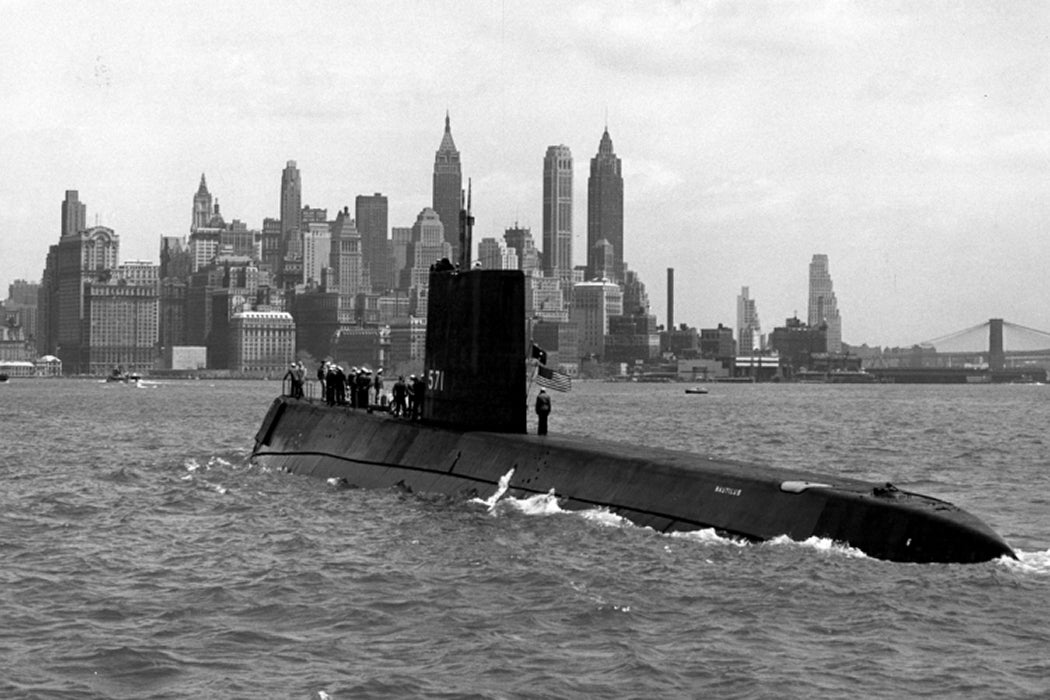On August 3, 1958, a nuclear submarine drifted beneath the North Pole. The mission was conducted in secret, but over the ensuing days, it became a major news event. On August 9, the story of the USS Nautilus was featured on the front page the New York Times, above the fold. The voyage of the Nautilus came at a crucial moment in the Cold War, and the timing was entirely by design.
The launch of Soviet Sputnik satellites in 1957 had created “a wave of public angst” in the United States, writes Charles J. G. Griffin. After the first US attempts to launch a satellite through the Vanguard program failed, Eisenhower needed a win. His administration turned to the Nautilus and began to craft a narrative around the submarine. Griffin argues that their strategy demonstrates how “technological spectacles” could be used to send important political messages.
Admiral Hyman Rickover of the United States Navy had overseen the construction of the submarine, which was the first in history to use a nuclear reactor. While previous submarines could only submerge briefly, nuclear power made the Nautilus capable of staying submerged for long periods.
But the Eisenhower administration worried that the Nautilus “lacked a signature accomplishment,” writes Griffin. After considering a submerged circumnavigation, they settled on a transit below the North Pole. They called it “Operation Sunshine” and hoped that the voyage could turn things around in the “bleak post-Sputnik landscape,” according to Griffin.
As the submarine passed below the North Pole, the crew sent a historic message back to Washington, DC: “Nautilus 90 North.” There was a press conference, a ticker-tape parade, and plenty of positive press coverage. Griffin dissects the propaganda campaign to show the complexities of using technology for political messaging.
The Nautilus only carried a light armament, so the nuclear power plant was given center stage as part of Eisenhower’s focus on peaceful applications of atomic energy. The official messaging even mentioned the possibility of cargo submarines plying the waters below the Arctic in the near future.
But while Nautilus may not have been fully equipped for combat, the choice of the Arctic had a tactical element. Griffin explains that underneath the surface of the peaceful message was the “confidence-building image of American submarines prowling in the Soviet Union’s back yard.” They also had to balance the “technological and human elements” of the mission, Griffin argues. One problem was the fact that the Nautilus crew worked in relative comfort compared to previous polar explorers.
Weekly Newsletter
To account for this, the administration turned the crew of the Nautilus into a new type of Cold War hero. They were depicted as “cool, highly trained professionals on the job,” Griffin writes. A combination of advanced technology and expertise meant the Nautilus crew could watch TV while sailing 400 feet below the Arctic ice.
Weaving this narrative was a difficult feat of political rhetoric, according to Griffin. The capabilities of Nautilus constrained its symbolic potential, and the Eisenhower administration needed a careful strategy. The Apollo program presented the Kennedy administration with a similar problem a decade later.







